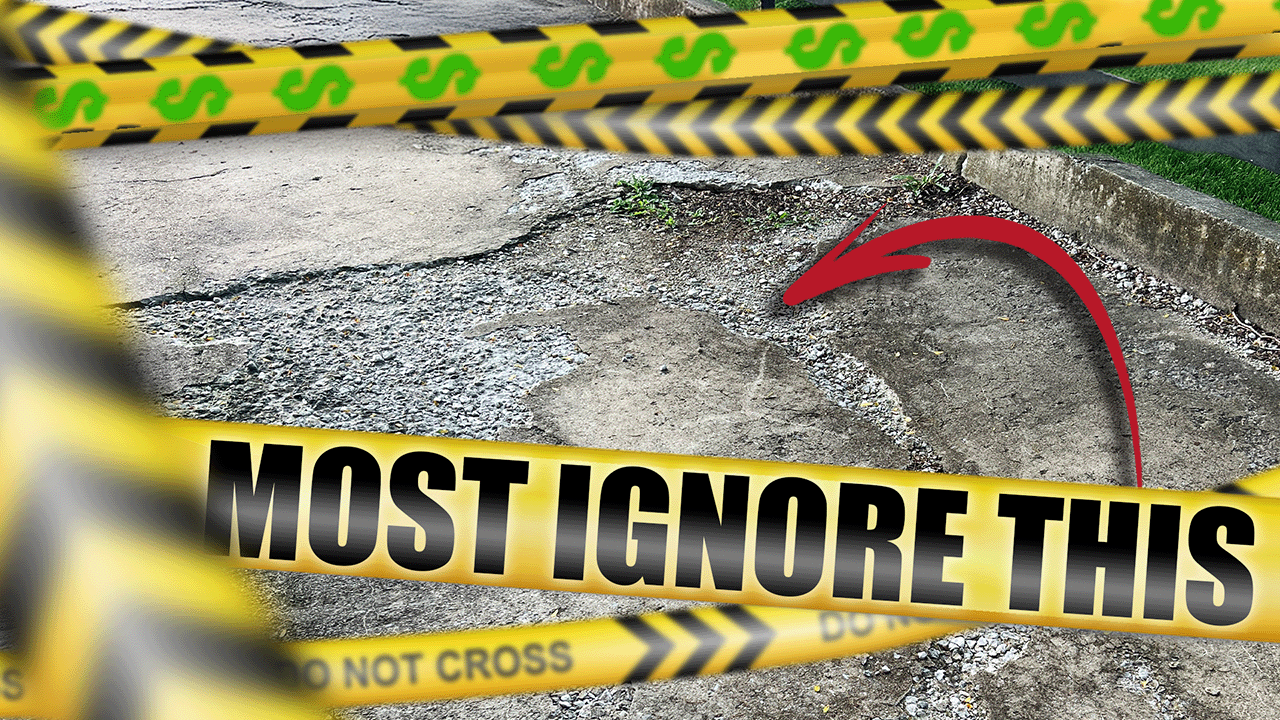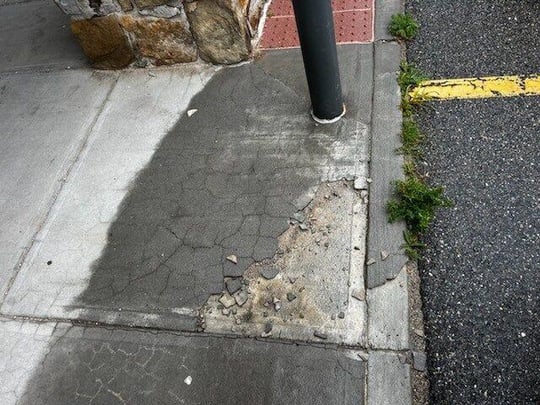Topics:
Search for topics or resources
Enter your search below and hit enter or click the search icon.
Providing your email address will keep you updated should we need to provide updates specific to your location.
August 6th, 2025 | 3 min. read
By Sarah Etler

If you've noticed chipping, flaking, or pitting sections in your concrete, you’re likely dealing with surface spalling – a common problem that can happen to old or new concrete alike.
This article will guide you through what exactly spalling concrete is, its causes, dangers, repair options, and preventive measures.
TL;DR
Concrete spalling happens when the surface starts to chip, flake, or pit, usually from water, freeze-thaw cycles, salt, or poor installation. You can slow it with sealing, but the only permanent fix for badly spalled concrete is full replacement paired with prevention measures.
In This Article
Concrete spalling happens when the surface of your concrete starts to break apart, often showing as:
It can affect small patches or cover an entire driveway or sidewalk. It usually starts small at the surface but can work its way deeper and crack the slab if ignored.

Spalling can be caused by many different factors. Here’s what that looks like in the real world:
Concrete is porous. When it absorbs water and temperatures drop, that water freezes, expands, and “pops” the surface open. Over time, these continuous freeze-thaw cycles worsen the damage.
Salt doesn't just melt snow. It mixes with water and seeps into the concrete, where a chemical reaction speeds up internal breakdown and leads to spalling.
Concrete with the wrong mix (usually low Portland cement content) is more vulnerable to weather, wear, and spalling. Even well-installed concrete can fail if the mix was off.
If concrete was installed during extreme heat or cold, or over-finished, it will likely be more prone to spalling.
If water reaches the steel reinforcement inside the slab, it can rust and expand. That internal pressure pushes outward and causes surface breakage and spalling.
Yes, spalling can be dangerous, especially when:
Even if it starts small, spalling tends to spread unless addressed early.

Unfortunately, you can’t reverse spalling once it starts. But you can slow it down or make it look better, at least temporarily.
Penetrating sealers soak into the concrete and form a chemical bond, blocking water intrusion. They’re your best shot at slowing further spalling damage and are nearly invisible once dry.
Topical sealers form a visible layer over the surface, but they often peel or form white splotches. They don’t stop spalling, and may make things look worse long term.
Applying a thin layer of resurfacing compound over the spalled area can temporarily improve appearance, but it doesn't address the underlying cause and likely won’t last long.

Pro Tip: A good rule of thumb: if the slab is still structurally sound, sealing makes sense. If it’s falling apart or crumbling, replacement may be the only option.
Completely replacing the concrete is the only permanent fix for concrete spalling. If the spalling…
…it’s time to consider full replacement.
Pro Tip: Replacing a slab isn't a guarantee that the problem won’t return. Without better prep and sealing practices, new concrete can spall just like the old.
Preventive measures from the get-go are crucial in protecting your concrete from spalling:
Cleaning and sealing concrete with a penetrating sealer soon after installation can help prevent spalling.
Routine maintenance, including cleaning and reapplying sealer as needed, can extend the life of your concrete and protect it from spalling.
Sealing cracks with a concrete-specific caulk can prevent water from entering and causing erosion or other freeze-thaw damage.
If your concrete’s spalling, or you just want to prevent it before winter hits, many A-1 Concrete Leveling locations offer professional sealing services.
Get real answers from a local team that knows the conditions in your area. Request a free estimate today!
Concrete spalling is when the surface of your concrete starts to peel, flake, or chip away. It usually starts as small spots but can spread fast.
The main culprit is water. When moisture gets into your concrete and freezes, it expands and damages the surface. Salt, poor concrete mix, or bad curing during installation are also common causes.
You can patch spalling temporarily or seal it to slow the damage, but you can’t truly “fix” or reverse spalling once it starts. The only permanent fix is to replace the affected slab.
Start by sealing new concrete with a penetrating sealer. Reapply when it no longer repels water, and keep cracks caulked so water can’t sneak in and freeze.
Sarah Etler joined A-1 Concrete Leveling after receiving her Bachelor of Arts degree in English from Northern Kentucky University. As A-1's Content Marketing Manager, she works closely with industry experts to produce content that will best answer questions related to concrete repair and maintenance practices. Sarah loves living a life full of discovery and is excited every day to see what new things she can learn and share with those around her.
Topics: